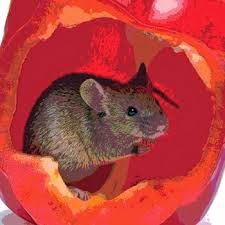Example of an ISO 22000 Prerequisite Program
We were discussing about ISO 22000 food safety management system basics throughout the last week to give you some insight. But only the aspects of what prerequisite programs required to comply with ISO 22000 standard in general. However, when you read the ISO 22000 standard to understand the documentation requirements which we hope to discuss little bit later, you will realize that there various other factors that you must comply for the fulfillment of structure of the document. Thus here you can look in to an example of an ISO 22000 prerequisite program which will give you the basics of documentation. It will also guide you to understand the way of writing, of course this is only a one way of expressing the idea which is not that comprehensive, but you can find various other ways different authors has written. The objective is to give you an idea of basic requirements of the ISO 22000 prerequisite requirements are focus on. But the data and the compliance criteria are varying defend on the operation as well as the specific product manufactured.
An Example Prerequisite Program That can be customize according to your requirements
Note: This ISO 22000 prerequisite program is written for
a orthodox black tea manufacturing plant as a generic PRP which is not a
very comprehensive one, but you can add or remove any part of it to customize
for your ISO 22000 FSMS requirements.
ISO 22000 -
PREREQUISITE PROGRAMME
PRP 01 –
CONSTRUCTION, LAYOUT AND EQUIPMENT
Distribution:
1. Director/General
Manager
2. Administration
Manager
3. Administration
Officer
4. Factory
Manager
5. Senior
Assistant Factory Officer
6. Assistant
Factory Officer – Rolling
7. Assistant
Factory Officer – Firing
8. Consultant
– FSMS
1.0 Objective
To prevent and
minimise food safety hazards being introduced to products due to layouts,
interior design, equipment and construction.
2.0 Scope
This procedure
applies to buildings and equipment where processing of food, storing of raw and
packing material, in process and finished products.
3.0 Responsibility
3.1 General Manager – Guidance and compliance with requirements
3.2 Administrative Officer – Designing of layout and identification
of appropriate equipment
–
Installation and maintenance of equipments
3.3 Factory Manager – Identification of requirements
3.4 Consultant – Compliance with FSMS
3.6 Senior Factory Officer – Monitoring and maintaining the
facilities
4.0 Activities
4.1 Design
and layout
4.1.1 The internal design and layout shall permit
good food hygiene practices; prevent contamination of food during and between
operations. When changes are made to initial design and layout those changes
shall be carried out without deviating from the said requirements.
4.1.2 The internal design and layout shall permit
adequate ventilation to prevent unacceptable accumulation of humidity
condensation or dust and to remove contaminated air. Where applicable all nets
on window are cleaned or washed once a month.
4.1.3 Separate areas away from production facility
for vehicle parks shall be identified and parked accordingly.
4.2 Internal
Structures
4.2.1 Construction and finishing of floor shall be
so that will facilitate easy drainage and cleaning.
4.2.2 Construction material of the floor shall be
resistant to the product manufactured in the specified area, detergents and
sterilising agents used.
4.2.3 Floors shall be sloped to avoid residual
pools. The floors shall be sloped to drains or gutters at 1 in 40 to 1 in 60.
4.2.4 Sleeves or curbs shall be used as
appropriate when pipes, ducts or other equipments need to be passed through the
floor.
4.2.5 Gutter drains shall have smooth vertical
walls rounded or coved bottoms on a minimum slope of 1 in 100. Sizes are 152 to
304 mm wide and 152 to 203 mm deep. Gutters should be covered with a strong
open metal grating rugged enough to withstand any unavoidable heavy traffic.
These shall be in short sections of less than one meter so they can be easily
lifted for cleaning. Grating shall be rested on ridges or buttons to allow
water and small partials to drain away.
4.2.6 Floor drains shall be set in the floor so
that the top of the grating is 3mm below the level of the floor. Floor drain
shall have a minimum water seal of 36 mm.
Removable secondary strainer shall be used to prevent entry of
cockroaches and rodents. Floors shall be slopped to drain.
4.2.7 Stairs and platforms. Decking shall be made
from solid plate or wood. Stair cases rises above level of the product shall be
encased to prevent dirt being transferred in to the product. Steps shall be
made of the same anti-slip material.
4.2.8 Walls, partitions, doors and windows where
appropriate shall have smooth and non absorbent surfaces, easy to clean and where
necessary disinfect.
4.2.9 The paints suitable for incidental food
contact or classed as food grade shall be used on product zone surfaces. The
paints that do not contain toxic or tainting materials shall be used in
non-food zones.
4.2.10 Design for covers of wires, conduits, pipes
etc. The system and the components shall be completely sealed, or exposed so
that they can be easily or thoroughly cleaned. Dust tight or explosion proof
features shall be included in dry areas. Water proofing and splash proofing
shall be included in wet areas.
4.2.11 Ceilings and overhead fixtures shall be
constructed and finished to minimise accumulation of dirt and dust and to
prevent condensation. Ceilings shall be non porous easy to clean and light
coloured with a finish that has desirable light reflectance characteristics.
Ceiling shall be free of accumulation of dust and flaking paints. The junctures
between walls and ceilings shall be rounded and sealed against dust and water.
To minimise overhead equipment and risk of contamination of product, a service
floor shall be used to house ducts, pipe works, cables as a floor foaming the
ceiling of the production area.
4.2.12 Adequate natural or artificial lighting shall
be provided such that the intended inspection or production activity can be
effectively conducted Where necessary lighting shall
4.2.12.1 Be sufficient for the work or
function.
4.2.12.2 Be of suitable colour where it is
important, e.g. for inspection areas
4.2.12.3 Provide suitable contrast between the
work and the background.
4.2.12.4 Give minimum glair either from the
light units or from the reflection from the other surfaces.
4.2.12.5 Give soft shadows if required but not
deep shadowing.
4.2.12.6 Come from fixtures designed and
installed to
• Avoid contamination of food or
equipment in an event of breakage.
• Be insects and dust tight.
• Be easy to clean and maintain.
4.2.13.1 Emergency
lighting
Emergency lighting
is required in areas where normal lighting system may fail.
• Escape lighting – This both shows and
lights escape roots and enables orderly evacuation as well as assisting
emergency services by locating fire fighting and first aid equipment.
4.2.14 Condition of all internal structures and
fittings shall be inspected monthly by the process owner and /or food safety
team member and shall be informed to administrative officer for corrective
actions if any.
4.3 Preventing
access (exclusion measures) for Rodents, Insects, and Birds.
4.3.1 Outer boundaries of factory areas, the walls
around the buildings shall be surrounded by tarmac or well paved path
preferably 5-6m wide, which must be kept as clean and empty as possible.
4.3.2 When there is no tarmac path the growth of
weeds shall be prevented by carefully scheduled use of weed killer and the
ground shall be kept flat and levelled as possible. The growth of vegetation
shall be controlled effectively by using gravel to cover the ground or
utilizing the land as appropriate.
4.3.3 Drainage channels and gratings shall be kept
empty and clean. Drainage gratings and corners shall be easy to remove for
routine maintenance, but at the same time must be firmly set in place with
drainage holes designed to prevent the access of rodents.
4.3.4 The parking of pallets equipment and goods
in this area must be kept short. This area shall be well drained.
4.3.5 Foundations shall be in concrete and go down
to minimum of 300mm (1feet) below solid ground level.
4.3.6 In case of potentially gnawable walls, a
smooth metal sheet at least 300 mm wide (1 ft) shall be used to cover the base
of the walls.
4.3.7 Provisions shall be made to arrange special
cleaning regimes for the architectural stone pillars on the factory.
4.3.8 The entry doors to production facilities
shall be equipped with automatic self closing devises.
4.3.9 Openings around the pipes leading to and
away from the premises must be protected, e.g. sealed with wire netting which
is then covered and filled with cement.
4.3.10 Windows shall be protected with anti insect
netting preferably using virgin plastic mesh of 2mm.
4.3.11 Air intakes/ vents shall be equipped with anti
insect netting. If the vents are located in critical production areas they must
be equipped with special (HEPA) filters.
4.3.12 Lighting in operational areas shall be such to
permit very accurate work and also efficient inspection. Positioning of lights
directly over areas where the products are exposed should be avoided.
4.3.13 In places where doorways directly link to the
production department from out-door environment, a chamber with double door
shall be used. The door shall be equipped with automatic door closures. This
chamber shall be maintained dark and an insecticuter shall be in operation.
4.3.14 To prevent access of birds the building as a
whole shall be free of window sill’s ledges and protuberances as possible thus
not giving birds a chance to lodge or nest.
4.4 Equipment
4.4.1 Equipment and containers which are directly
in contact with food shall be designed and constructed to ensure that they can
be easily and adequately cleaned disinfected and maintained to prevent
contamination of food.
4.4.2 The material used for equipment and
containers shall be of non toxic nature for the intended use. List of materials
approved by food safety team leader, for use as food contact surfaces, shall be
maintained in each production unit.
5.0 References
5.1 Plant
layout
6.0 Records
6.1 Format
for suitability of internal structures and fittings
FSMS 04/PRP/01/F/00
6.1.1 Receiving/
Withering area
FSMS
04/PRP/01/F/01
6.1.2 Rolling
room
FSMS
04/PRP/01/F/02
6.1.3 Firing
FSMS
04/PRP/01/F/03
6.1.4 Sifting
& Packing
FSMS
04/PRP/01/F/04
6.1.5 Packing
material stores
FSMS
04/PRP/01/F/05
6.1.6 Finished
product stores
FSMS
04/PRP/01/F/06
6.1.7 General
stores
FSMS
04/PRP/01/F/07
6.2 List
of approved materials as food contact surfaces
FSMS
04/PRP/01/F/08


















